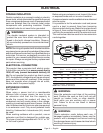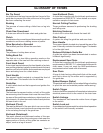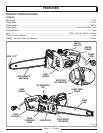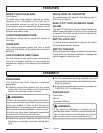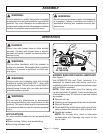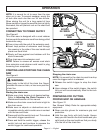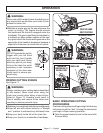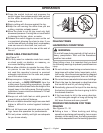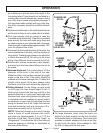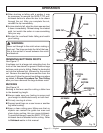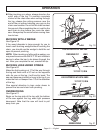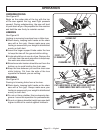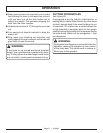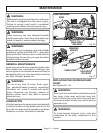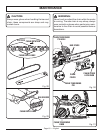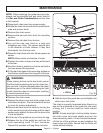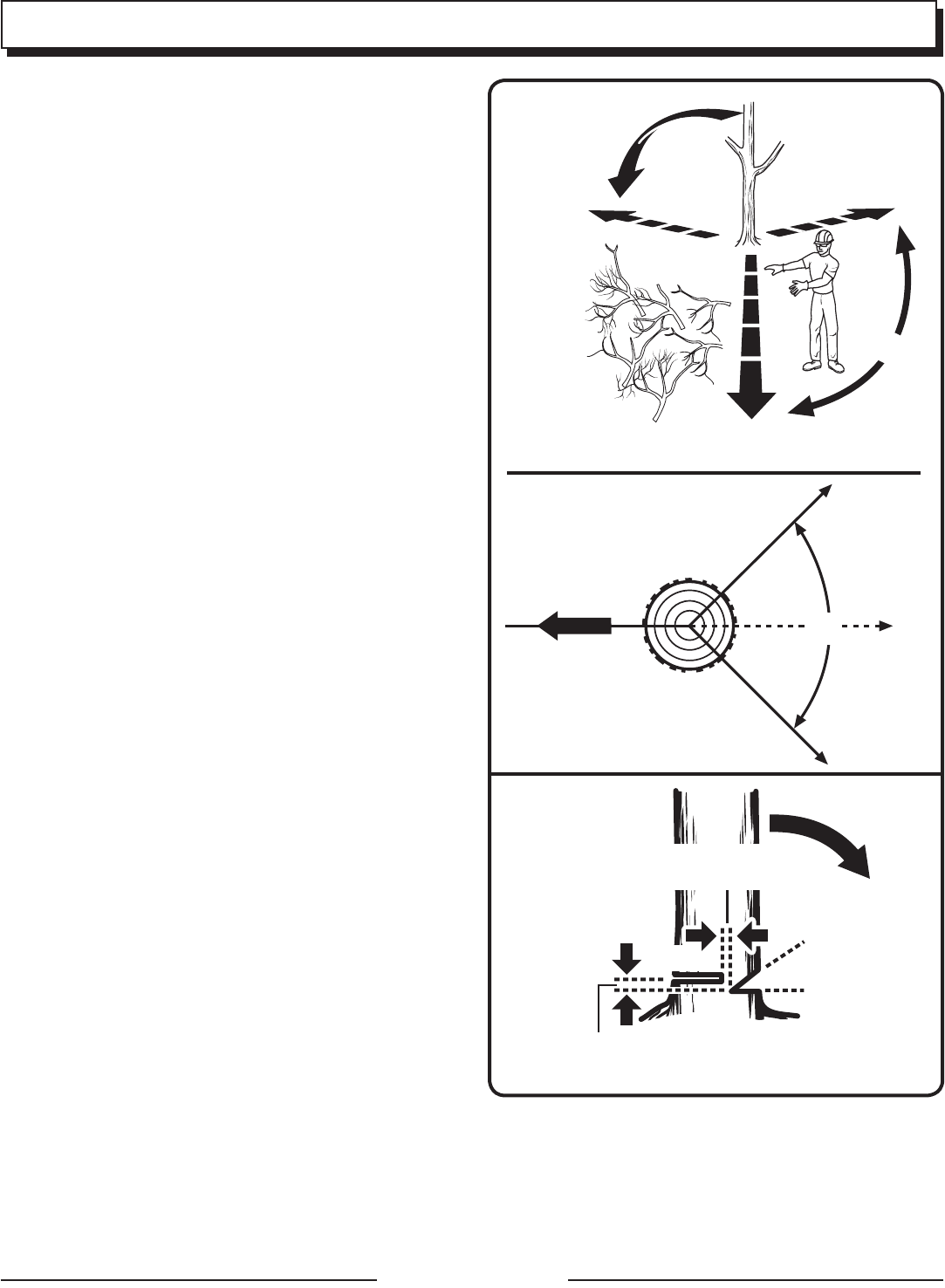
Page 17 — English
OPERATION
by a distance of at least twice the height of the
tree being felled. Trees should not be felled in a
manner that would endanger any person, strike
any utility line or cause any property damage. If
the tree does make contact with any utility line,
the utility company should be notified immedi-
ately.
Operator should keep on the uphill side of terrain
as the tree is likely to roll or slide after it is felled.
Pick your escape route (or routes in case the
intended route is blocked). Clear the immediate
area around the tree and make sure there are
no obstructions in your planned path of retreat.
Clear the path of safe retreat approximately 135°
from the planned line of fall.
Consider the force and direction of the wind, the
lean and balance of the tree, and the location of
large limbs. These things influence the direction
in which the tree will fall. Do not try to fell a tree
along a line different from its natural line of fall.
Remove dirt, stones, loose bark, nails, staples,
and wire from the tree where felling cuts are to
be made.
Notched Undercut. Cut a notch about 1/3 the
diameter of the trunk in the side of the tree.
Make the notch cuts so they intersect at a right
angle to the line of fall. This notch should be
cleaned out to leave a straight line. To keep the
weight of the wood off the saw, always make
the lower cut of the notch before the upper cut.
Felling Backcut. As the felling cut gets close
to the hinge the tree should begin to fall. If
there is any chance the tree may not fall in the
desired direction or it may rock back and bind
the saw chain, stop cutting before the felling cut
is complete and use wedges of wood, plastic
or aluminum to open the cut and drop the tree
along its desired line of fall. Make the backcut
level and horizontal, and at a minimum of 2 in.
above the horizontal cut of the notch.
NOTE: Never cut through to the notch. Always
leave a band of wood between the notch
and back cut (approximately 2 in. or 1/10 the
diameter of the tree). This is called “hinge” or
“hingewood.” It controls the fall of the tree and
prevents slipping or twisting or shootback of
the tree off the stump.
Fig. 13
45°
45°
90°
135°
135°
90°
135° FROM
PLANNED
LINE OF FALL
PATH OF
SAFE RETREAT
PLANNED LINE
OF FALL
PLANNED
LINE OF
FALL
PATH
OF SAFE
RETREAT
HINGE
2 in. OR 1/10 DIA
NOTCH -
APPROX. 1/3
DIAMETER
OF TRUNK
BACK CUT
2 in.
Fig. 14
On large diameter trees, stop the back cut
before it is deep enough for the tree to either
fall or settle back on the stump. Then insert soft
wooden or plastic wedges into the cut so they
do not touch the chain. Drive wedges in, little
by little, to help jack the tree over.



